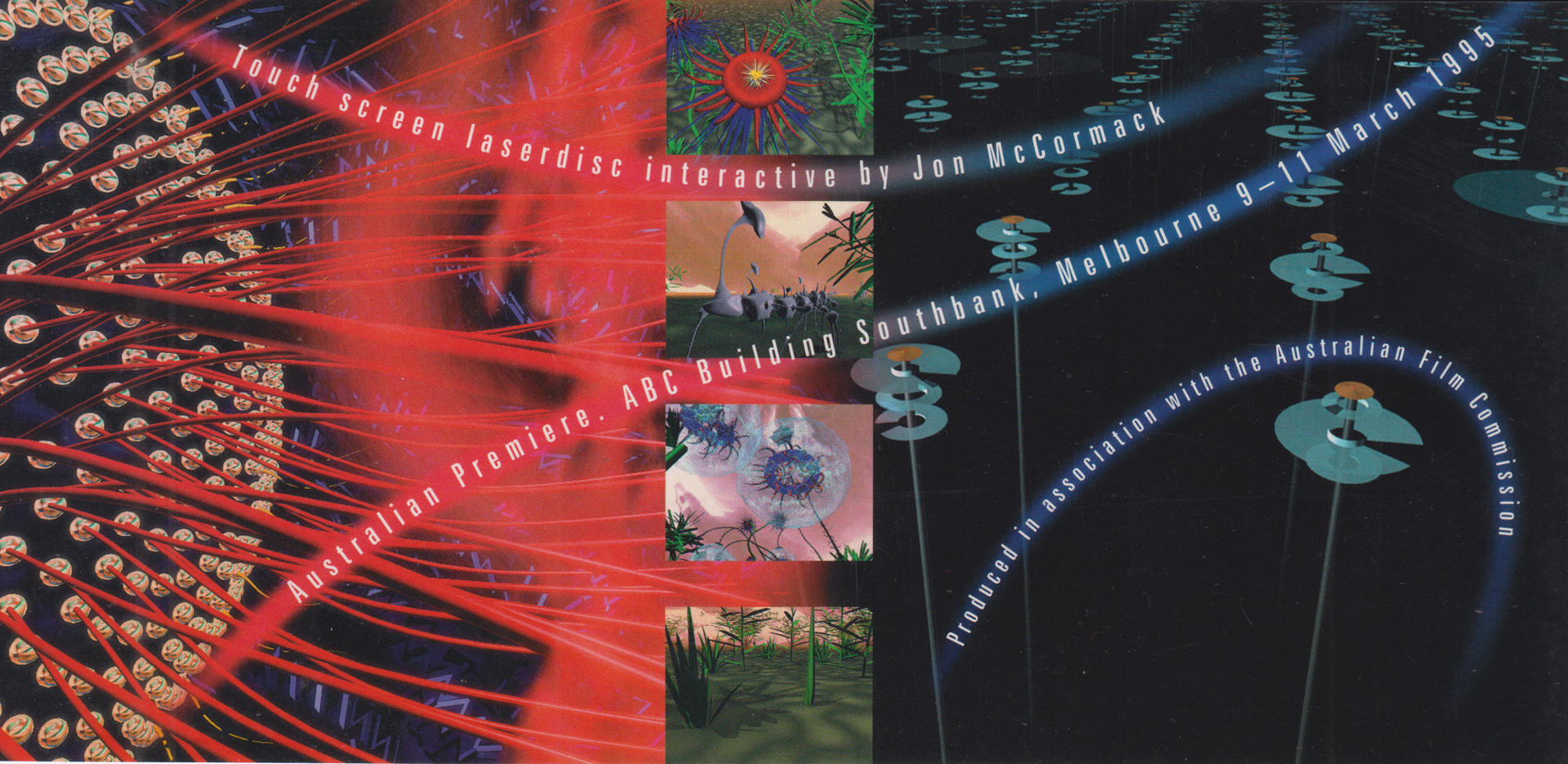“Interactive Evolution of Forms” presented by McCormack
Symposium:
Session Title:
- Artificial Life
Presentation Title:
- Interactive Evolution of Forms
Presenter(s):
Abstract:
This paper will discuss a symbolic grammar that allows the specification and creation of three-dimensional forms. The language of the grammar provides for control over shape, form, colour and texture overtime. The goal is to create Artificial Life environments where the logical production and interaction of the symbols within the grammar can be visualised via three-dimensional computer graphics. The practical results of this process will be illustrated with examples from a recent interactive videodisc installation, Turbulence, which was created using the language described in this paper. The work explores the use of algorithmic methods to abstract the structural elements, function and processes of natural life into rule-based systems that can be created and manipulated wholly within the data space of the computer. Like natural evolution, the interactive genetic evolution paradigm allows the user to evolve models based on aesthetic (as opposed to natural) selection.
Genetic evolution of models involves starting with a base form and mutating that form randomly. Several different mutations of the base forms are shown to the user, who picks the forms that most appeal from the ones presented. That form then becomes the parent of the next generation of mutated children and thus the process is repeated. This technique is applied repeatedly until a suitable form is reached or the user runs out of patience. The process allows individuals to evolve their own artificial forms according to personal aesthetic selection. The only criteria that determines the final shape and behaviour of the evolved entity is the choices of the user and the random mutations created by the machine. It will be argued that this is a powerful technique for the creation of complex models that would be difficult or impossible to implement by direct methods. In much the same way that life on earth has evolved its complexity and function through progressive selection, these techniques allow us to visualise ‘life-as-it-could-be’, via personal aesthetic evolution.






